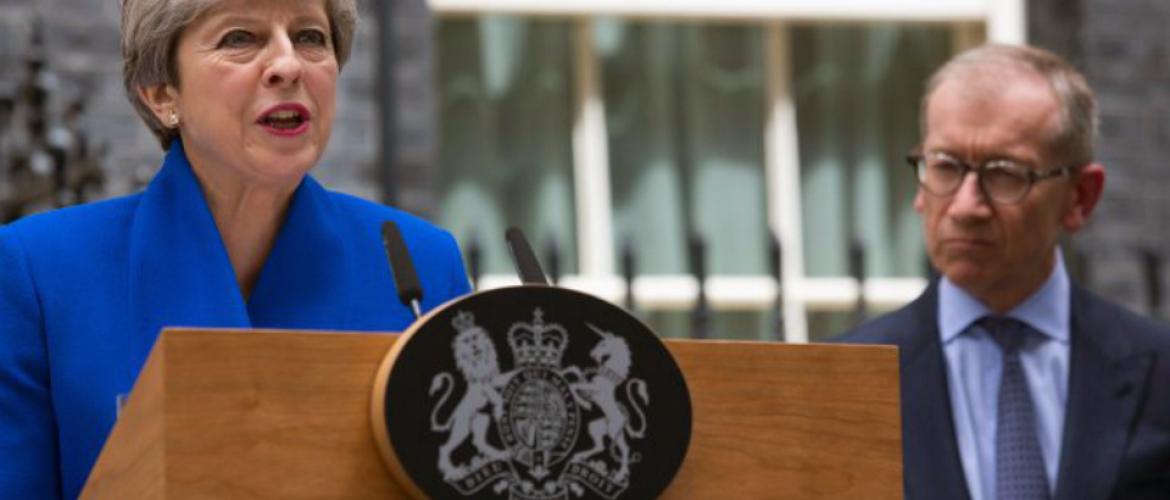No-deal Brexit: Not an option
May 27, 2019 | Expert Insights

Background
In June 2016, Britain voted to leave the European Union (EU), stunning Europe and the world. The EU employs a set of policies for its 28-member states that aims to ensure the free movement of people, goods and trade, among other services. Britain is deeply intertwined with the inner-workings of the EU, especially in regards to trade.
A no-deal Brexit means that the UK would leave the EU without an agreement about what their future relationship would look like. This is particularly important considering the deep commercial ties the two regions have.
Prime Minister Theresa May’s leadership in Brexit negotiations has been heavily criticised. She has been unable to form a consensus within the Parliament, or her Conservative Party, throughout Brexit proceedings. The official date for Brexit is currently expected to be October 31, 2019.
Analysis
Theresa May recently announced her decision to resign as Conservative party leader in early June, giving up her mandate to see the implementation of Brexit. Mrs May was abandoned by the last of her allies, in large part because she was unwilling to lead the country into a no-deal Brexit. She will continue as PM till her party chooses a new leader, who is expected to be selected by the end of July.
In January 2017, Mrs May made a policy speech in which she promised to break away from the EU’s economic framework and exit the European Court of Justice. More importantly, she was willing to leave in March 2019, even if no agreement was secured pledging - “no deal for Britain is better than a bad deal for Britain.” Hardline Brexiteers viewed the speech as a victory, bringing their thought into mainstream conservative thinking. Mrs May consistently made this promise, strengthening the position that a no-deal Brexit was an option. It appears that the pledge was made with little deliberation considering Mrs May eventual change of opinion.
In hopes of securing a stronger parliamentary mandate to make Brexit proceedings easier, Mrs May called a general election three years early. The results of the poll caused the Conservative party to lose its narrow majority, forcing Mrs May to form a minority government with the support of the Democratic Unionist Party of Northern Ireland. For the Irish party, a no-deal Brexit is not an option.
Northern Ireland’s border with the Republic of Ireland is the only land border the UK has with the EU. If the UK left the EU, restitution of tariff barriers between the regions would mean creating a physical border between Northern Ireland and Ireland. With the memory of the Irish Troubles still fresh, the Northern Irish party could not accept a hard border between the two regions. The issue of the Irish border also alienated Mrs May’s allies. Her tough talk in the early stages of the negotiations led her team to ignore the problem of Ireland.
After two years of deliberations, Mrs May produced a solution called the Irish backstop, which would keep the country inside a customs union where Northern Ireland was subject to additional EU regulations. This solution angered Mrs May’s foes and allies alike. In this scenario, Britain was neither entirely a part of, nor fully out of, the European Union. Brexiteers believed she had reneged on her promises, resulting in outspoken anger.
As political support for Mrs May’s plan dwindled, she attempted to court the Labour Party’s votes. The Labour Party, the opposition, Mrs May hoped, would support a plan that incorporated a softer Brexit. However, this effort was too little, too late.
In late 2018, Mark Sedwill, Mrs May cabinet secretary laid out the political and economic consequences of a sudden, no-deal Brexit. Around this time, Mrs May’s opposition to a no-deal scenario became more evident, alienating her allies further. As Mrs May struggled to find consensus on her plan, Conservatives became more supportive of a no-deal exit. This marked a shift from seeing a no-deal exit was a negotiating tactic to the purest representation of the 2016 mandate.
Boris Johnson, an influential Conservative party member who was initially a part of Mrs May’s cabinet, has explicitly stated that a no-deal exit “is closest to what people actually voted for.” Mr Johnson is the current favourite to succeed Mrs May.
Assessment
Our assessment is that Mrs May’s biggest challenge was to solve the Irish land-border issue caused by her pledge to consider a no-deal Brexit should other options fail. As other options failed, her refusal to carry out a no-deal exit led her to lose political support. We believe that Mrs May’s leadership proved to be uninspiring as she has prevaricated on several critical issues. Mrs May’s most significant failure was to publicly consider a no-deal Brexit without fully understanding its consequences.
We feel that the next leader of the Conservative party is likely to support a no-deal Brexit. We believe that this position leads to the same problems that affected Mrs May’s government. Although the candidates are most likely to have a greater understanding of a no-deal exit than Mrs May, it is unlikely that a no-deal solution is found for Ireland that would appease Brexit hardliners. We feel that it is in the best interest of Mrs May’s successor, and the UK, to build consensus and secure a deal with the EU before October 2019.
Image Courtesy - HM Government [OGL 3 (http://www.nationalarchives.gov.uk/doc/open-government-licence/version/3)]








Comments